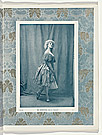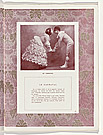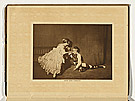Carnival [Carnaval]
Pantomime-ballet in one act
- Producer: Les Ballets Russes de Serge Diaghilev
- First performed: 20 February 1910, Pavlov Hall, St Petersburg
- Premiere: 20 May 1910, Theater des Westens, Berlin
- Costume design: Léon Bakst
- Costumier: Morris Angel & Son
- Scenery design: Léon Bakst
- Music: Robert Schumann; orchestrated by Nikolai Rimsky-Korsakov, Anatol Liadov, Alexander Glazunov, Nicholas Tcherepnin
- Choreography: Michel Fokine
- Libretto: Léon Bakst and Michel Fokine
- Main characters: Columbine, Estrella, Chiarina, Papillon, Pierrot, Harlequin, Pantalon, Eusebius, Florestan
The ballet takes place during a masked ball, where the melancholy and woebegone Pierrot unsuccessfully pursues Papillon (Butterfly); the fickle Columbine participates in a frivolous flirtation with the sprightly and mischievous Harlequin, both of whom in turn taunt Pierrot; the romantic Eusebius shadows Chiarina; the ardent and impetuous Florestan pursues Estrella and the pompous Pantalon is ridiculed and teased again by Columbine and Harlequin. The ballet ends with the entry of the disruptive Philistines, who unsuccessfully attempt to dampen the atmosphere of light-hearted revelry.
The characters in Carnaval were first given musical dimension in Robert Schumann’s 1834 work, Carnaval(Scenes mignonnes) op 9, in which twenty-two short piano pieces represent the spirit and character of masked revellers at Carnival. Familiar characters from Italian commedia dell’arte, including Papillon, Pierrot, Pantalon, Harlequin and Columbine, join evocative depictions of figures from Schumann’s life and characterisations of himself (as Florestan and Eusebius) and his wife Clara (as Chiarina). Bakst’s set for the Ballets Russes’ 1910 ballet was designed in the early nineteenth-century German Biedermeier style to suggest the anteroom of a ballroom in which the masked characters interact in flirtatious, light-hearted and poignant vignettes. While Bakst based their costumes broadly on the semiotic conventions of commedia dell’arte, each character is finely drawn to suggest the light elegance of the period in which Schumann conceived this enduring work.



![| Page twelve of Official programme for the Ballets Russes,Théatre national de l'opéra [Program officiel de Les Ballets Russes, Théatre national de l'opéra] | 1910](images/sml/199488.jpg)








